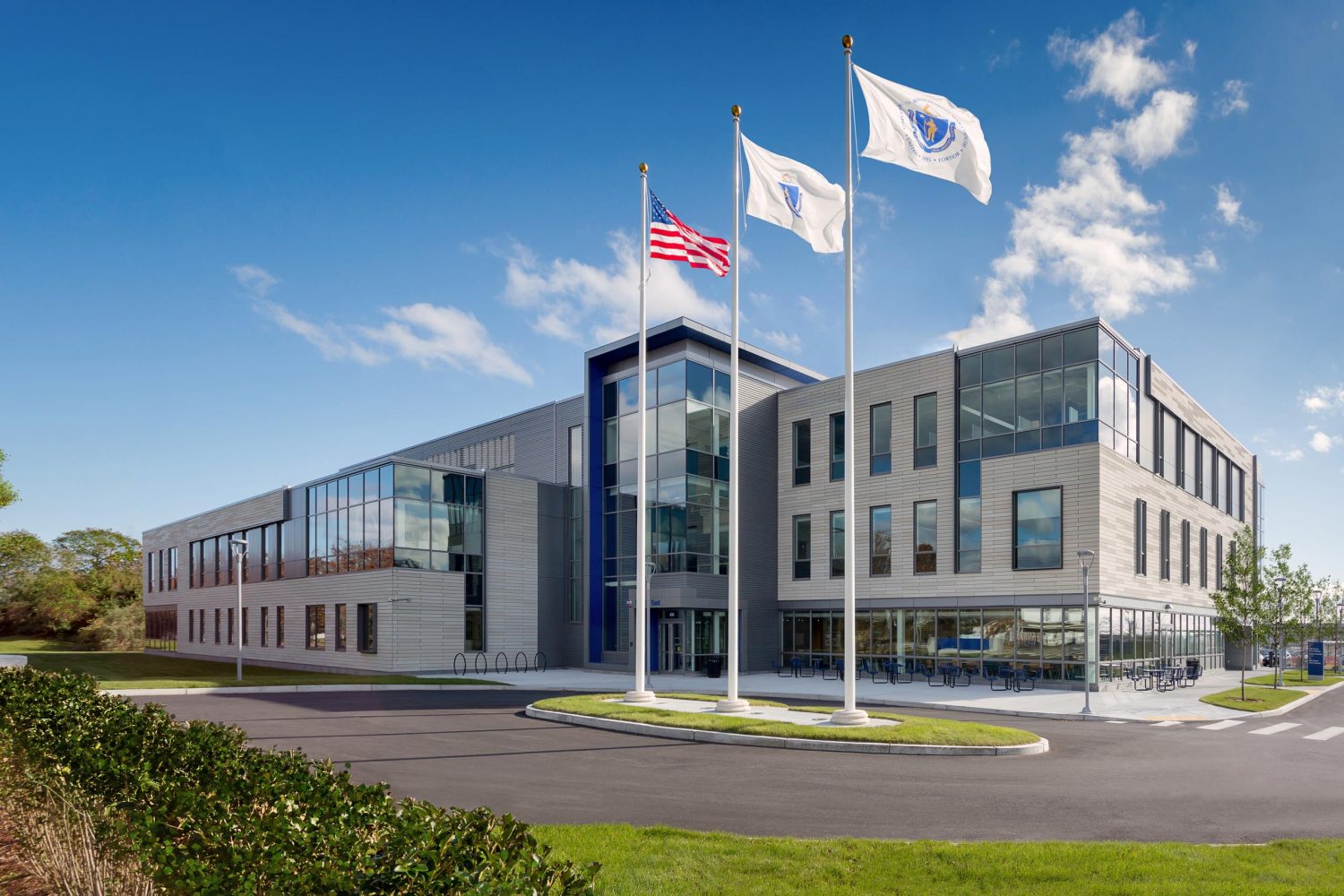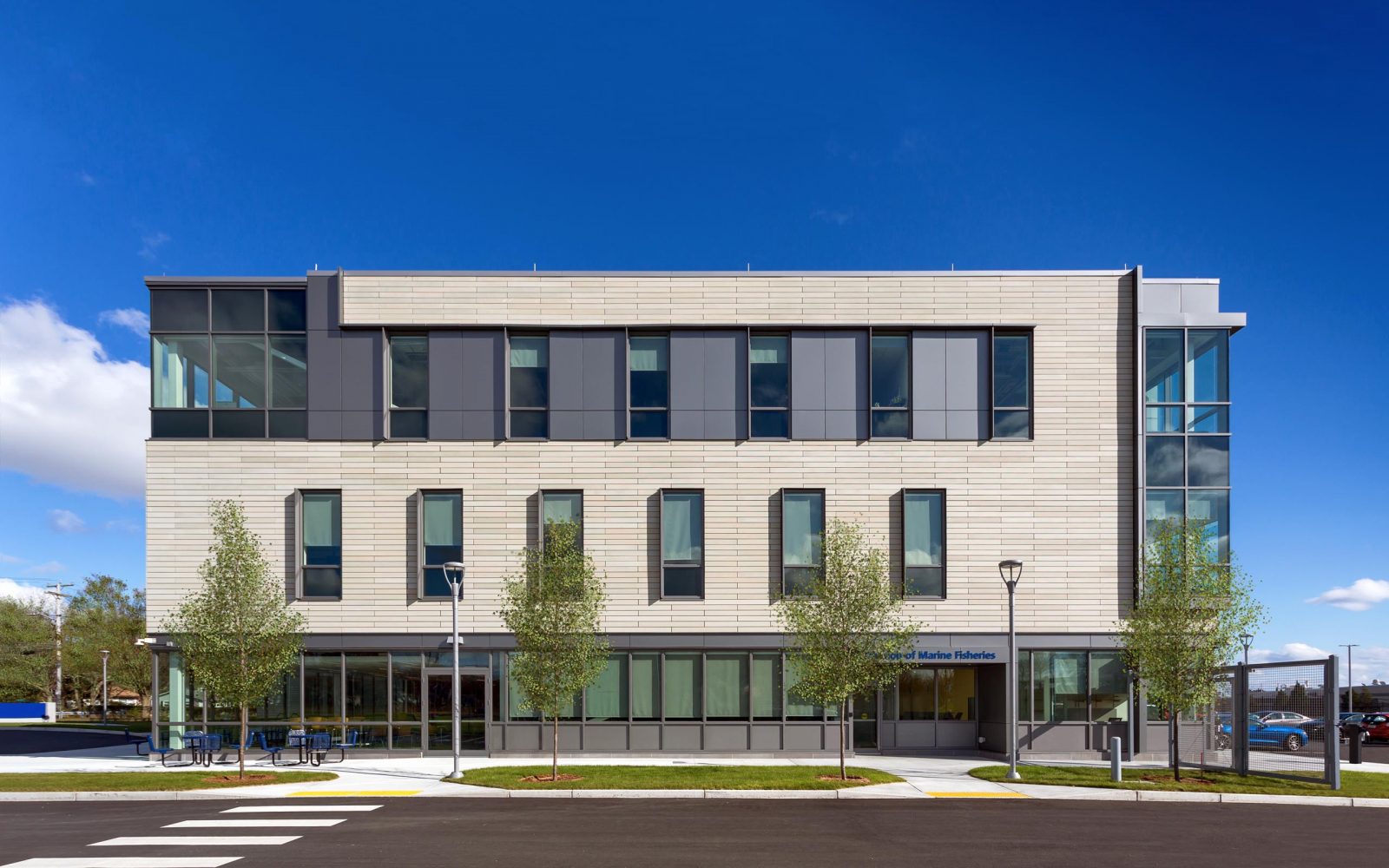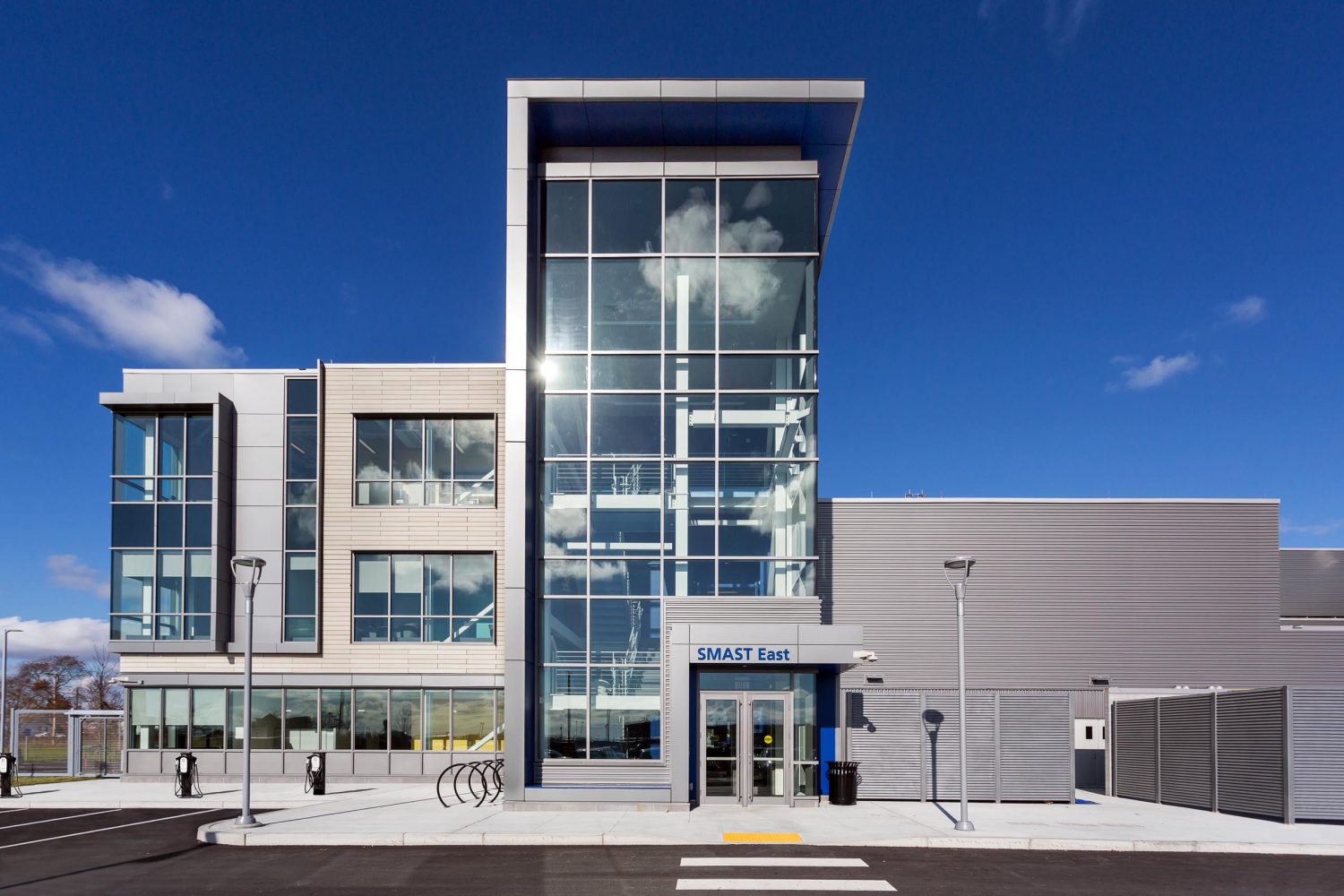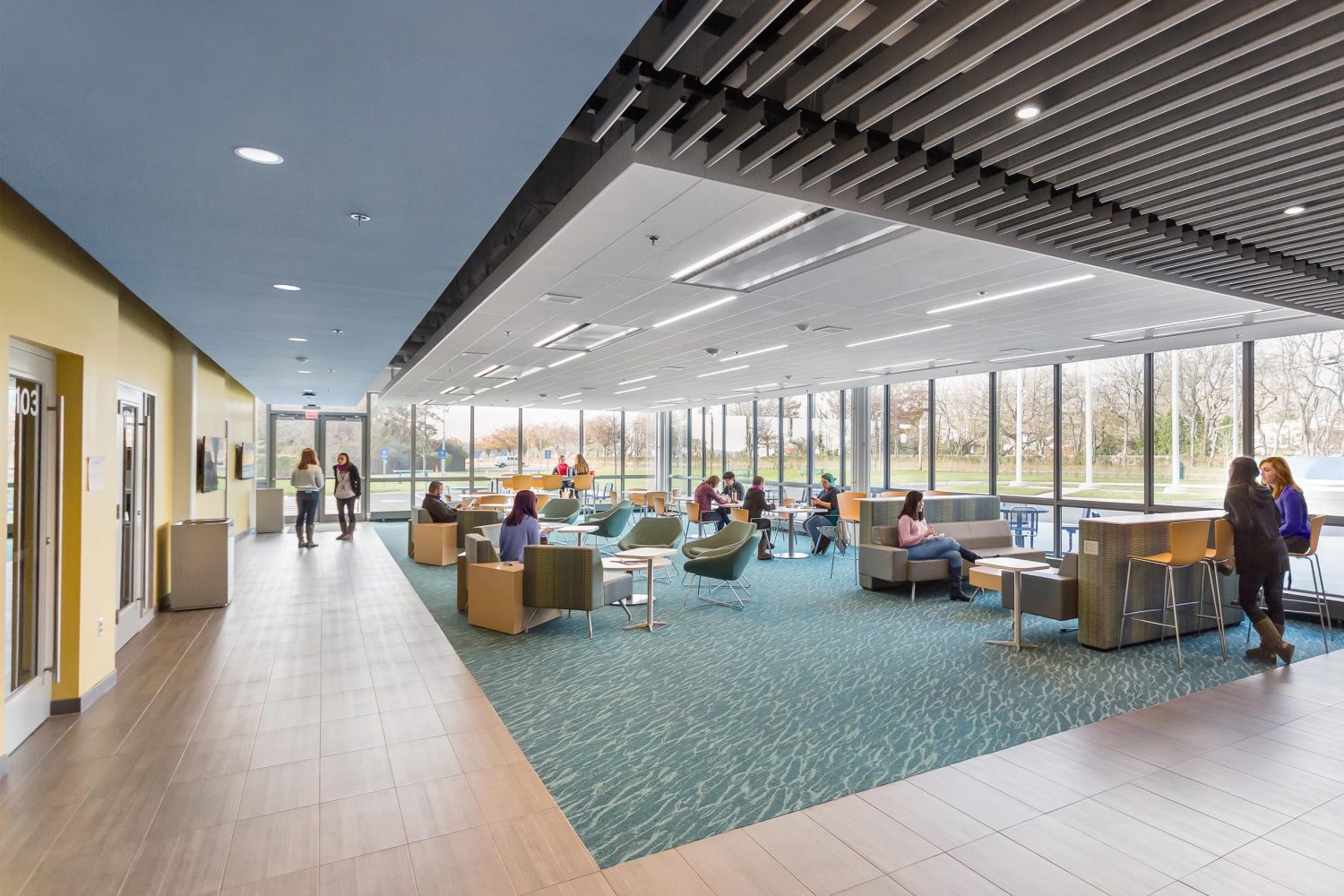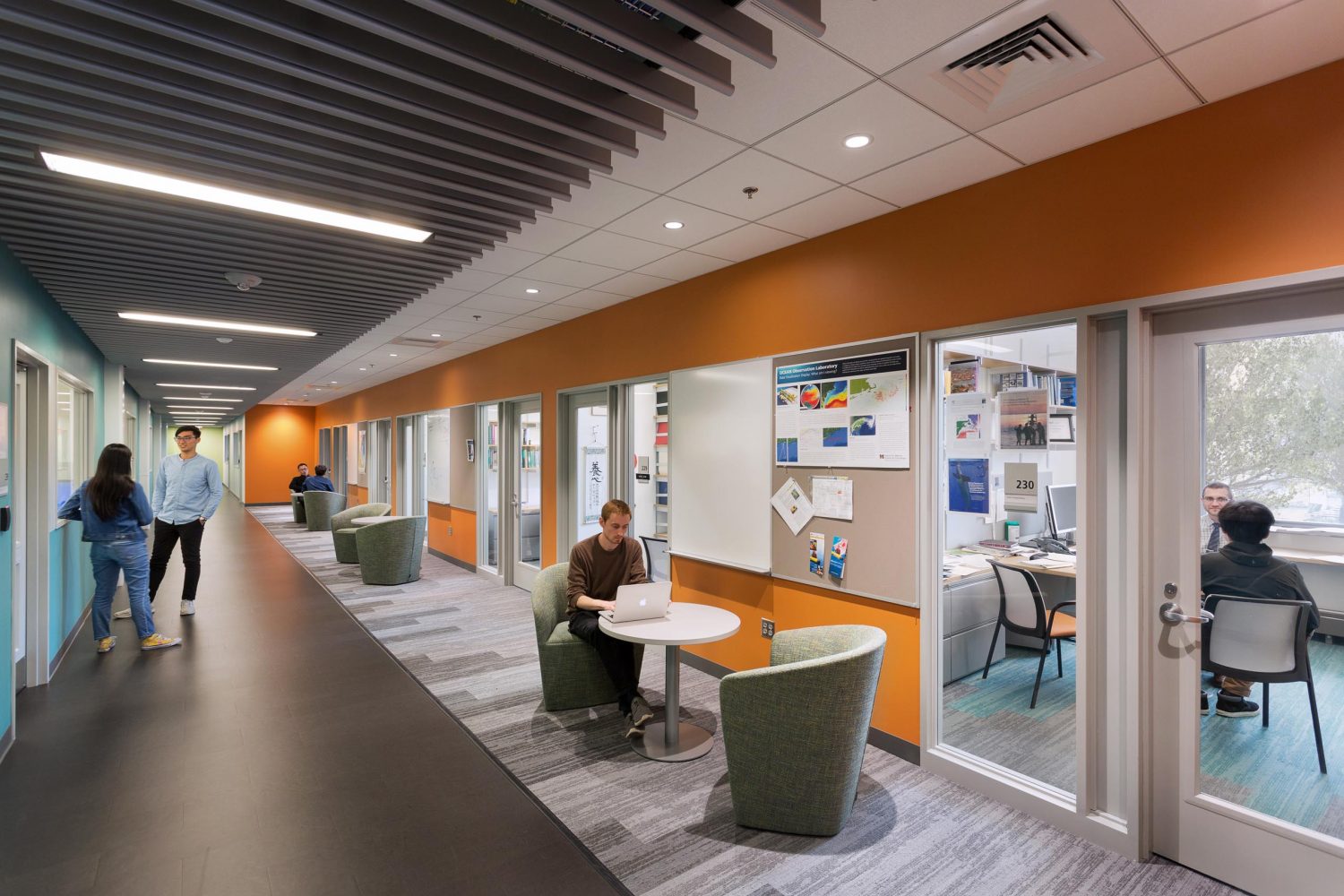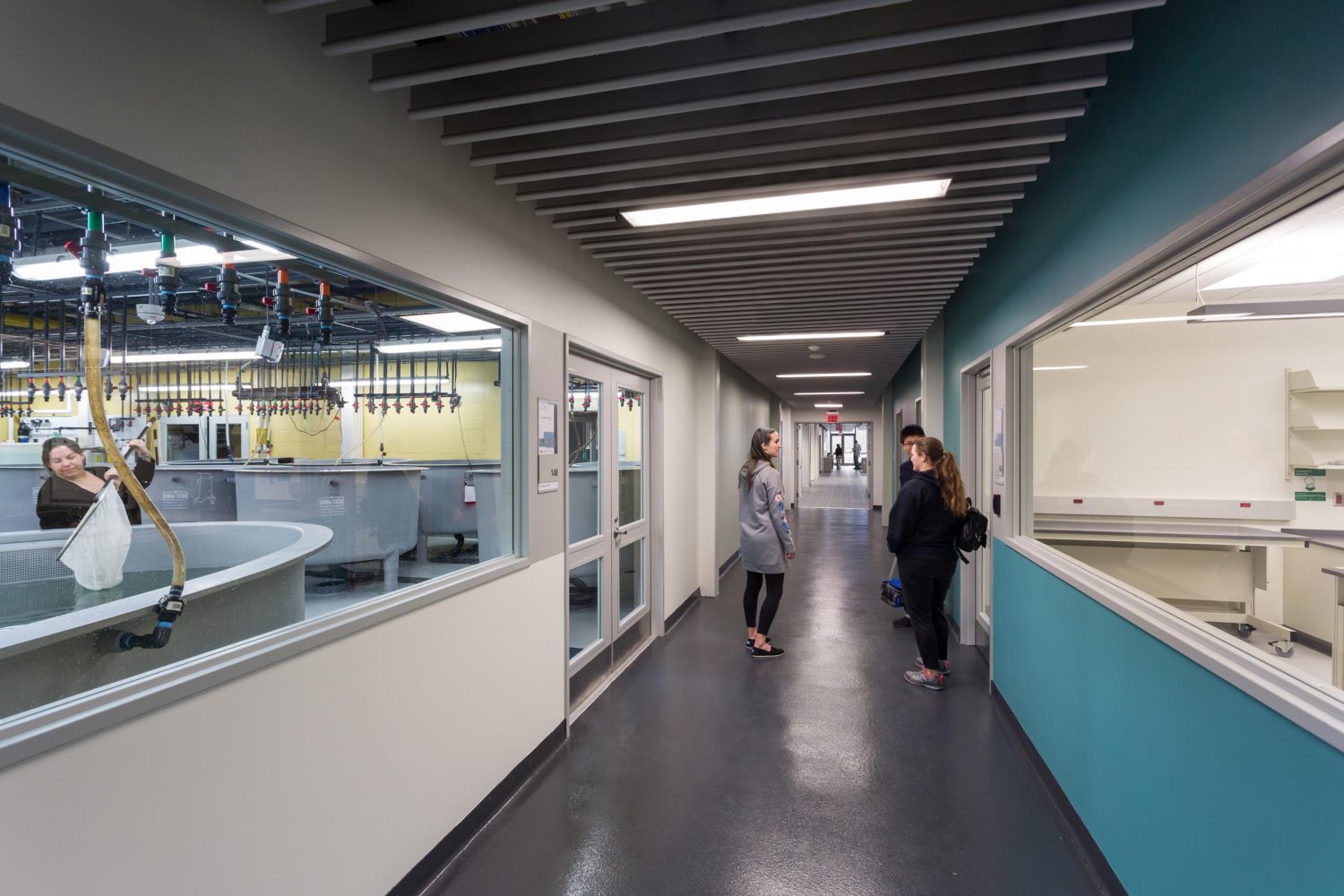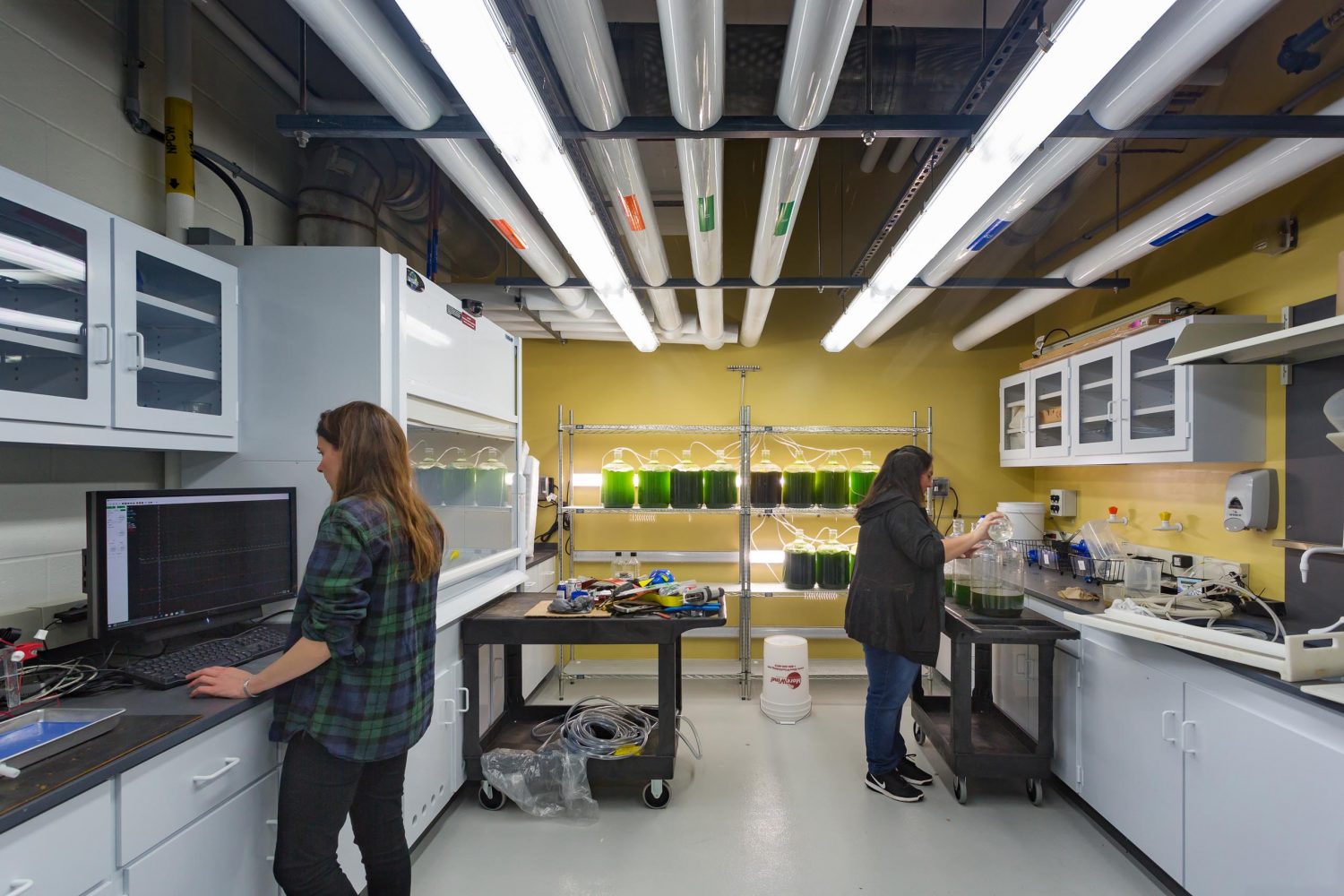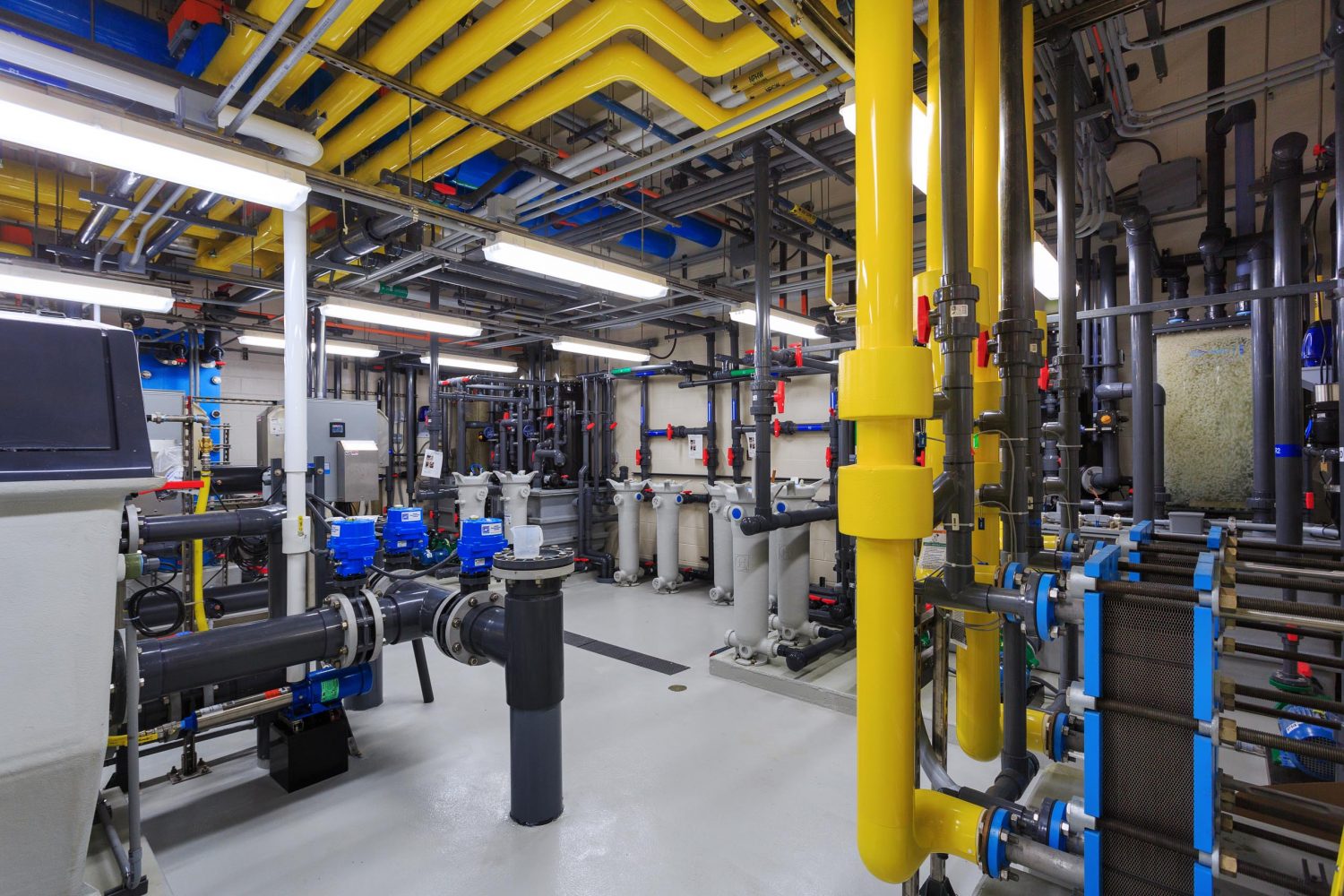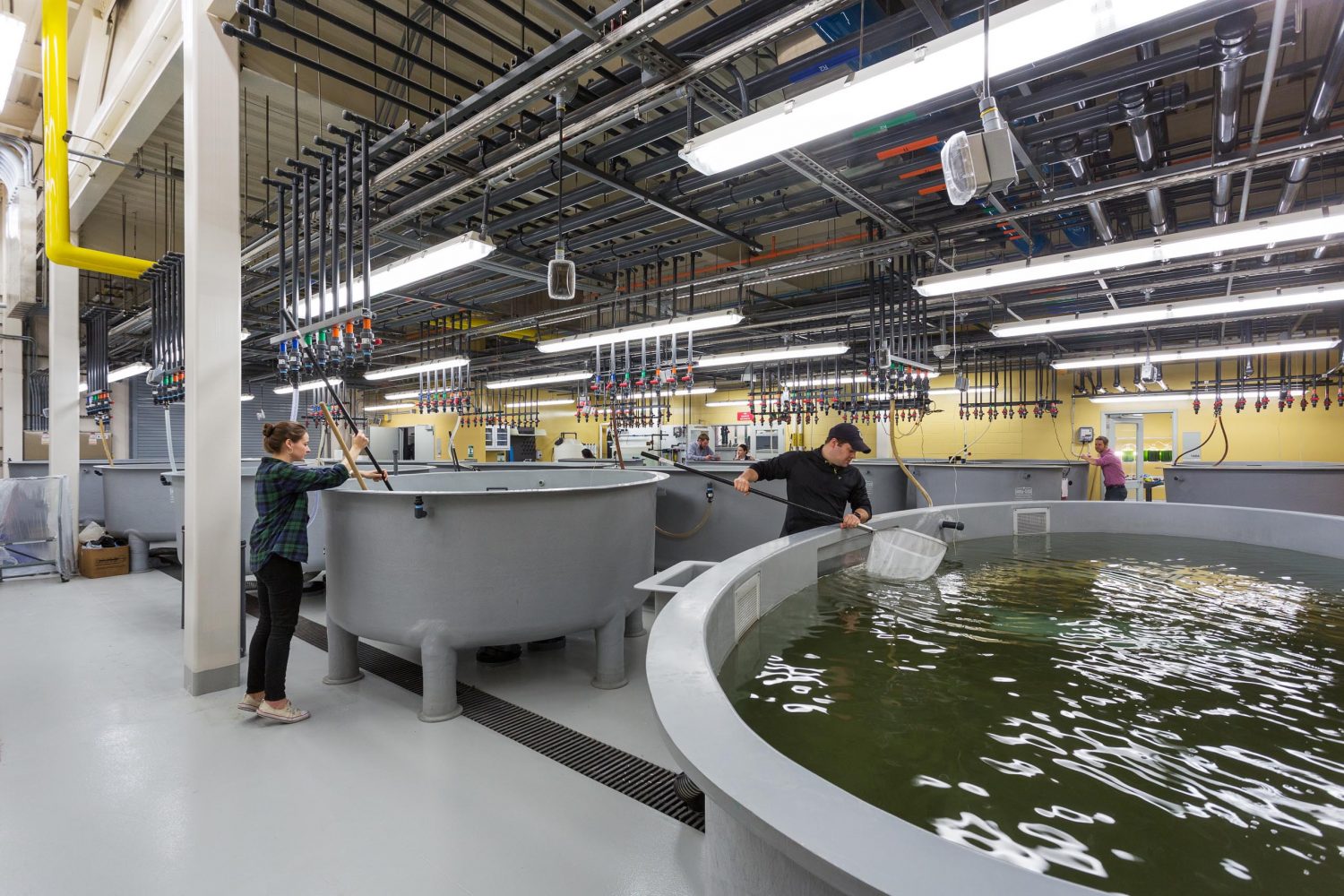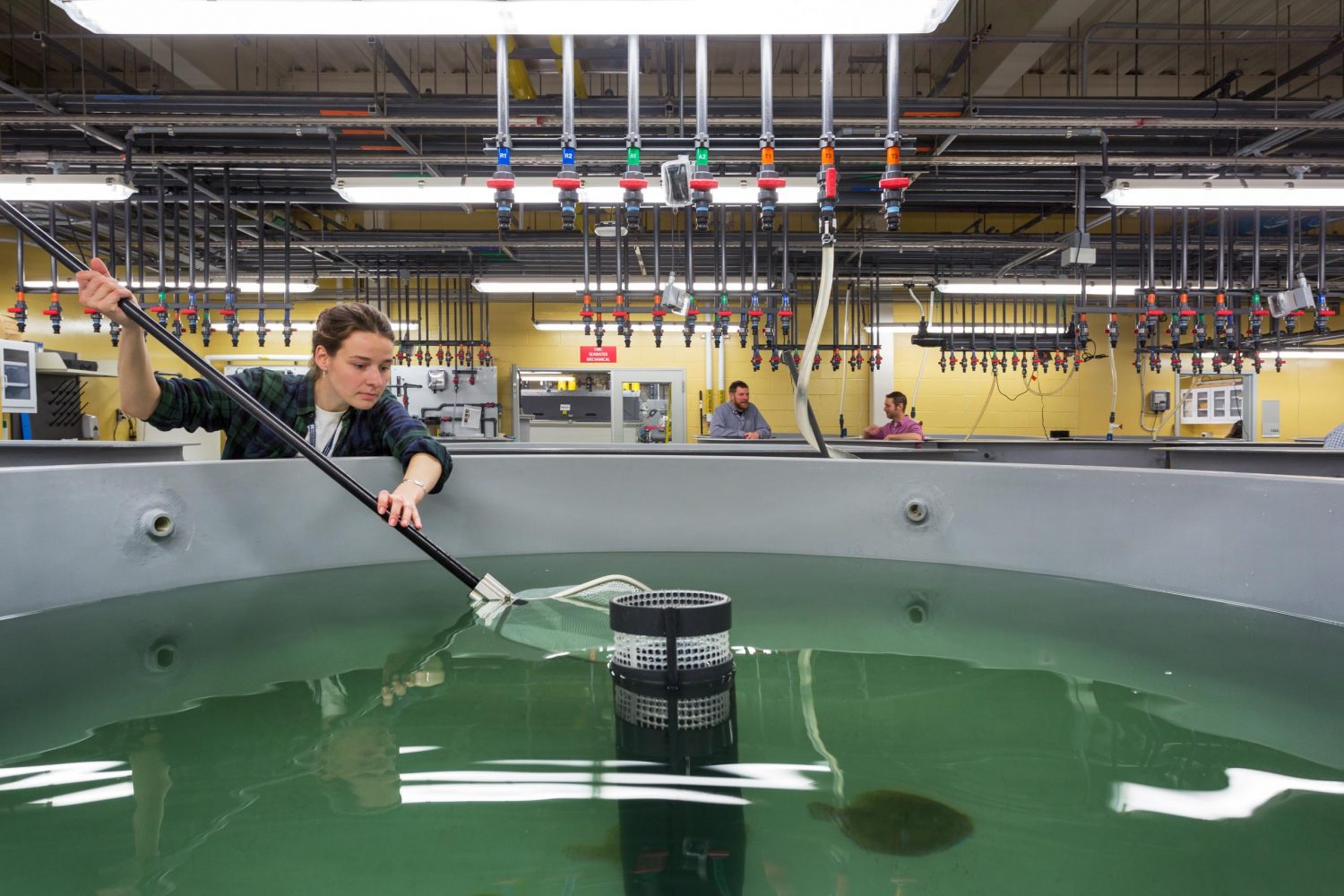University of Massachusetts Dartmouth School for Marine Science and Technology Research Building
University of Massachusetts Dartmouth School for Marine Science and Technology Research Building
“The oceans play a key role in our coastal economy and way of life, and are undergoing dramatic changes related to climate and human activity. By bringing our faculty, students and staff together with our partners at the Division of Marine Fisheries, we better position the University, Commonwealth and region to understand and respond to these changes.”
- Steven Lohrenz, Dean of the School for Marine Science and Technology, UMass Dartmouth
University of Massachusetts Dartmouth School for Marine Science and Technology Research Building
New Bedford, Massachusetts | 60,000 gsf new; 32,500 gsf renovations | $40.3 million | 2017 | LEED Silver Certified
The University’s School for Marine Science and Technology (SMAST) is located in New Bedford, Massachusetts, overlooking Buzzards Bay. Ellenzweig collaborated with the University, the Massachusetts Division of Capital Asset Management and Maintenance, and the Massachusetts Division of Marine Fisheries in planning and designing a new academic research building and the renovations to existing facilities to serve the Department of Fisheries and Oceanography, Department of Estuarine and Ocean Sciences, and the Massachusetts Division of Marine Fisheries. The new building’s program includes specialized research laboratories, lab support, teaching labs and classrooms, computer room, conference space, offices, and community outreach and partnership spaces.
SMAST interdisciplinary research focuses on Biochemical Cycling, Marine and Coastal Computation Modeling, Fisheries Science, Marine Renewable Energy, Ocean Observing/Sensing, and Ocean Physics. Highly specialized research laboratories include: seawater facility with holding tank for marine organism research and a large flume research tank with the ability to control fresh seawater temperature and chemistry for individual experiments; supercomputer server cluster for climate and oceanographic computational modeling; and high-bay storage to support fabrication and staging for ocean-going experimental equipment.
Every building element and system of the facility is designed for resiliency, durability, and sustainability. The building is sited just above the 500-year FEMA flood plain level and designed with a variety of features tailored for the risks of the coastal environment, including strategic placement of mechanical and electrical systems; managed shutdown and hibernation mode for critical research systems; and hurricane-resistant envelope design. Sustainable design features include state-of-the art machine controls, energy recovery, and hydronic cooling and heating systems, and low-flow fume hoods.


